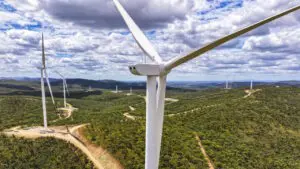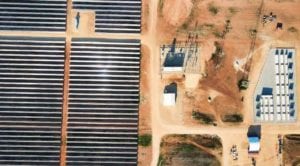One of Australia’s biggest and most ambitious energy investors, Quinbrook Infrastructure Partners, says it is now back in the Australian market, with “renewed” hope for renewables and storage after the switch in governments from the Coalition to Labor.
Quinbrook has focused most of its $US2.5 billion of investments on international markets in recent years, particularly the US and the UK, but says there are “phenomenal” opportunities in Australia if the market and policy settings are right.
Among them are what co-founder and CEO David Scaysbrook describes as the biggest battery to be given planning approval on the east coast, and huge opportunities in green hydrogen and green industrial hubs.
But he also gave a withering assessment of the policies of the previous Coalition government, particularly the flagship policy of Angus Taylor – Underwriting New Generation Investment – that went absolutely nowhere, and was one of the reasons Quinbrook was focused overseas.
“We gave up,” Scaysbrook told journalists at a briefing on Tuesday. Quinbrook had a peaking gas project in Queensland’s Lockyer Valley nominated as one of the 12 shortlisted projects in the first few months of Taylor’s rule, but found it impossible to negotiate a deal.
“Our project was first cab off the rank with the UNGI scheme,” Scaysbrook says.
“We just got buried in bureaucracy. We just couldn’t really make progress on extracting commercial terms from the government that were consistent with UNGI and … there was just diametrically opposed positions on what we were trying to achieve together.
“We just really gave up hope that we could get there.”
Quinbrook was not alone. None of the 12 shortlisted projects – which included half a dozen pumped hydro projects – ever signed a deal. Taylor focused instead on Snowy Hydro’s Kurri Kurri gas project in NSW which is widely regarded as an expensive white elephant.
Scaysbrook’s comments are yet another testament to the complete failure of Taylor’s period as energy minister – nearly four years where he presented nothing more than a policy and market bollard to new investment.
Scaysbrook says he is now looking to shift capital back to Australia, much more than the mere 10 per cent that has been allocated. He sees Australia and the UK as the two most prospective markets.
But his major concern about Australia is the “dysfunctional” National Electricity Market, which he says is not fit for purpose for a transition to renewables and storage.
He favours a “capacity market” that supports flexible capacity similar to that in the UK, where the company is building that country’s biggest solar and battery storage project, and where the last of its coal fired power stations will be closed within three years.
After its frustrations with Taylor’s failed UNGI program, Quinbrook has changed the focus of the Lockyer project from gas to battery storage, and has approval for up to 800MW of battery capacity.
Quinbrook is now calling for either equity partners or off-takers for the project. He suspects it will suit a “legacy” utility looking for fast-ramping, dispatchable capacity.
“Batteries are getting cheaper and more efficient (than gas),” he says. “I think (Lockyer Valley) is in an ideal position to take advantage of those changes and trends in the market over time.”
As for renewables in Australia, Scaysbrook says installations need to treble to meet Labor’s assumptions of an 82 per cent renewables share by 2030, but the market needs certainty in the policy details.
“The compound rate of growth that (that target) implies is extraordinary … it’s more than anywhere in world. A huge amount of capital has to be deployed,” he said.
“We are at a tipping point. The scale of these projects are in the multiple of billions of new investment … in large scale new industrial complexes for domestic consumption and for export.”
But there are headwinds in the short term. Despite recent price falls, the cost of renewables components, and for battery storage has jumped significantly because of global supply constraints.
“We’re seeing record price increases in the cost of the equipment, solar modules in particular,” he says, echoing the findings of anew report from QBoz that points to substantial increases in the costs of building wind and solar farms.
“Battery prices in the last 12 months have increased by nearly 50% solar module costs, depending on where you’re sourcing from, anywhere between 30 and 40%.
“Our view is we will not see significant abatement of those cost trends for the next two to three years. And so it’s not a temporary aberration.
“So the challenge that we have is, not only are we facing a mountain in terms of of sheer scale or volume of capital deployment, we’re doing that at a time when we’ve got significant supply chain challenges.
“It’s not a great time to be buying significant volumes of new renewable energy equipment, particularly if we suffer any further weakness in the Australian dollar.”










